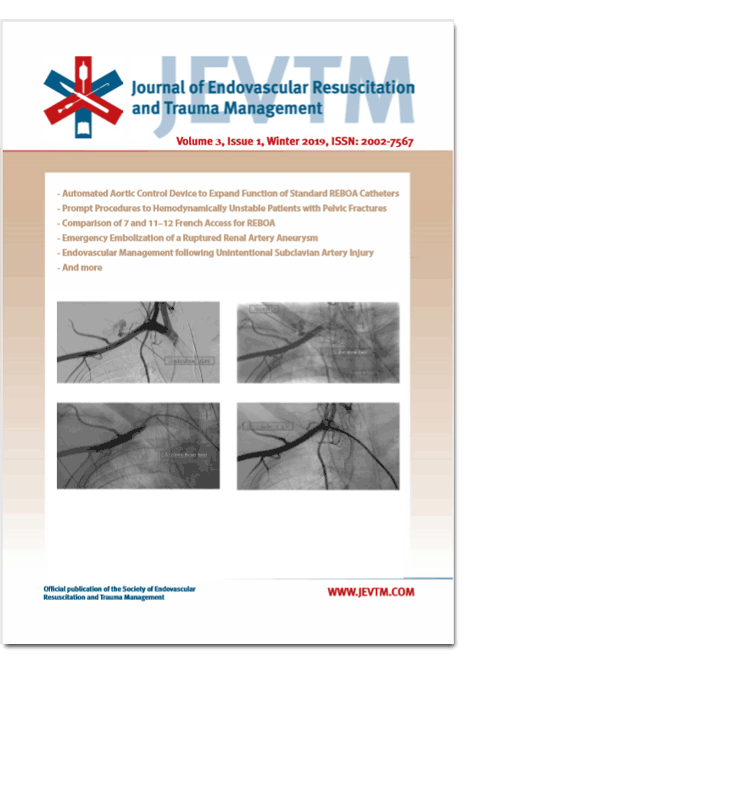The Non-Diagnostic Triad in a Hypotensive Blunt Trauma Victim: What is the Role of REBOA?
DOI:
https://doi.org/10.26676/jevtm.v3i1.70Keywords:
REBOA, Non-Diagnostic Triad, Blunt TraumaAbstract
Background: With the growing use of REBOA as an alternative to Emergency Department thoracotomy in select patients, the algorithms are still evolving, and current guidelines for resuscitative endovascular balloon occlusion of the aorta (REBOA) use appear to have gaps as evidenced by this case. Most algorithms include chest x-ray, focused assessment with sonography for trauma (FAST), and pelvic x-ray to guide where to place the device, either in zone 1 or zone 3. There is a lack of guidance for patients in whom all three of these studies are negative, which we define as a non-diagnostic triad (NDT). Furthermore, there is a lack of guidance after placement of the device in patients who fail to respond or only minimally respond.
Methods: We describe a difficult case where a blunt trauma patient with unstable hemodynamics had marginal response to placement of zone 1 REBOA, while physical exam and imaging in the trauma bay did not reveal a source for his hypotension.
Results: The patient was sent to the CT scanner whereupon multiple injuries were identified and detailed in the case. The patient unfortunately expired soon after.
Conclusions: Further clinical studies with better classification are needed in order to better understand the significance of REBOA responders and non-responders in patients with an unknown source of hypotension. The NDT of negative chest x-ray, FAST, and pelvic x-ray represent a significantly challenging patient population that should be studied further.
Published
How to Cite
Issue
Section
License
Copyright (c) 2019 Journal of Endovascular Resuscitation and Trauma Management

This work is licensed under a Creative Commons Attribution 4.0 International License.
Authors of content published in the JEVTM retain the copyright to their works.
Articles in the JEVTM are published under the terms of a Creative Commons CC BY 4.0 license, which permits use, downloading, distribution, linking to and reproduction in any medium, provided the original work is properly cited.




